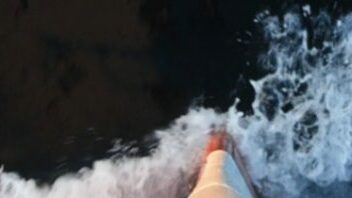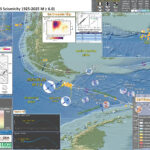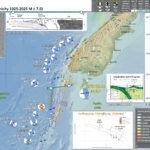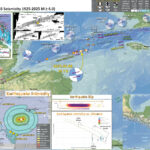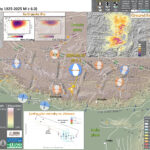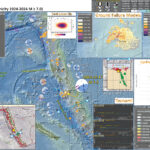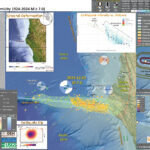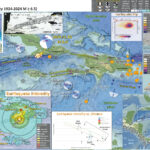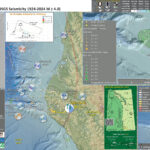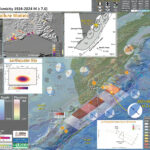Yesterday my team was bringing to fruition weeks of planning (with lots of this preparation taking place in the last week) for a retirement celebration for Nick and my boss, Rick Wilson. Rick retired in Dec 2024 after 34 years…
Earthquake Report: M 6.7 New Zealand
As I was working on a report for this M 6.7 earthquake, the 28 March 2025 M 7.7 Sagaing fault earthquake hit. Here is the USGS page for the M 6.7 earthquake. https://earthquake.usgs.gov/earthquakes/eventpage/us7000pmem/executive So, for now, here is a brief…
Earthquake Report: M 7.7 Burma
Two nights ago as I was falling asleep there was a magnitude M 7.7 earthquake in Burma. I got up and thought about all the potential suffering. https://earthquake.usgs.gov/earthquakes/eventpage/us7000pn9s/executive Upon viewing the earthquake location on the map (the epicenter), I knew…
Earthquake Report: M 7.6 Cayman Islands
This afternoon my time, there was a large earthquake in the Caribbean. https://earthquake.usgs.gov/earthquakes/eventpage/us7000pcdl/executive This magnitude M 7.6 earthquake happened along a right-lateral transform plate boundary, the Swan Island fault. At transform plate boundaries, the plates moves side-by-side. The USGS earthquake…
Earthquake Report: M 7.1 Tibet
As i was travelling to a series of meetings to discuss subduction zones, particularly the Cascadia subduction zone, there was a large magnitude earthquake in TIbet. https://earthquake.usgs.gov/earthquakes/eventpage/us6000pi9w/executive The earthquake has a normal faulting earthquake mechanism, the result of extension. The…
Earthquake Report: M 7.3 Port Vila, Vanuatu
As I was ending my work day, an earthquake in the western Pacific happened. There was a magnitude M 7.3 earthquake offshore of Port Vila, Vanuatu https://earthquake.usgs.gov/earthquakes/eventpage/us7000nzf3/executive The tectonics of Vanuatu is dominated by a subduction zone, a convergent plate…
Earthquake Report: M 7.0 northern California
My Experience for this Earthquake I was attending a meeting for work where we were discussing the ongoing development of a tool that we (the California Tsunami Program – the CA Governor’s Office of Emergency Services and the California Geological…
Earthquake Report: M 6.8 Cuba
Yesterday there was a magnitude M 5.9 earthquake along the south coast of Cuba. Normally I would not take notice, but this event was located along a plate boundary fault. https://earthquake.usgs.gov/earthquakes/eventpage/us7000nr0n/executive The Septentrional–Oriente fault is a transform plate boundary where…
Earthquake Report: M 4.4 Mendocino triple junction
This past week has been a busy week for earthquakes in California. Both northern and southern. There was a M 4.4 earthquake sequence in Petrolia, CA. I contacted my friend Thomas Dunklin as these earthquakes were exactly underneath him (he…
Earthquake Report: M 7.0 Kamchatka
I was in the San Francisco Bay area last weekend to see Phil Lesh (the bassist for the Grateful Dead) and many others at the 4th Sunday Daydream at McNears Park along the bay. Phil came down ill so was…
